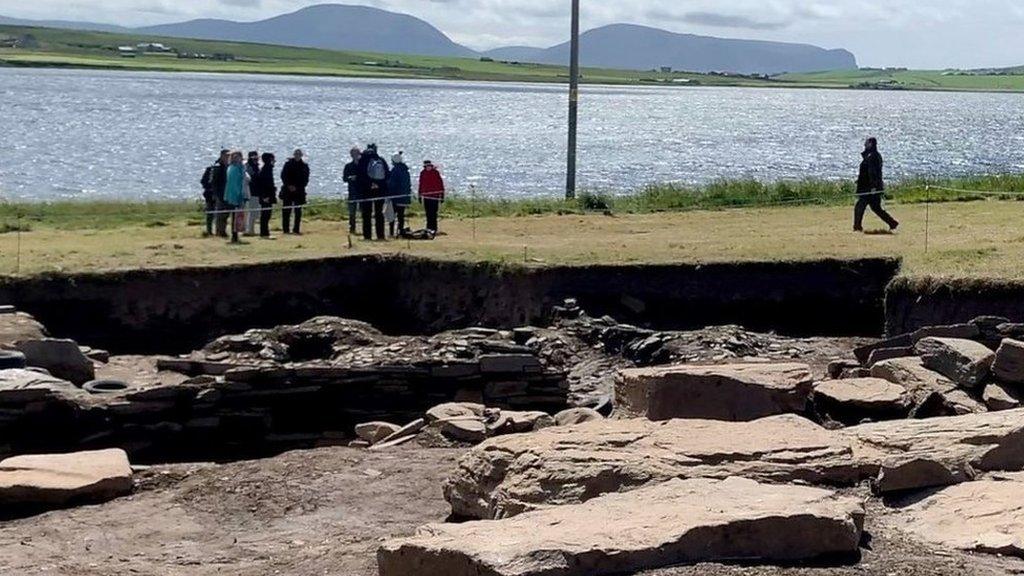New discoveries at Orkney's Ness of Brodgar Neolithic site
- Published
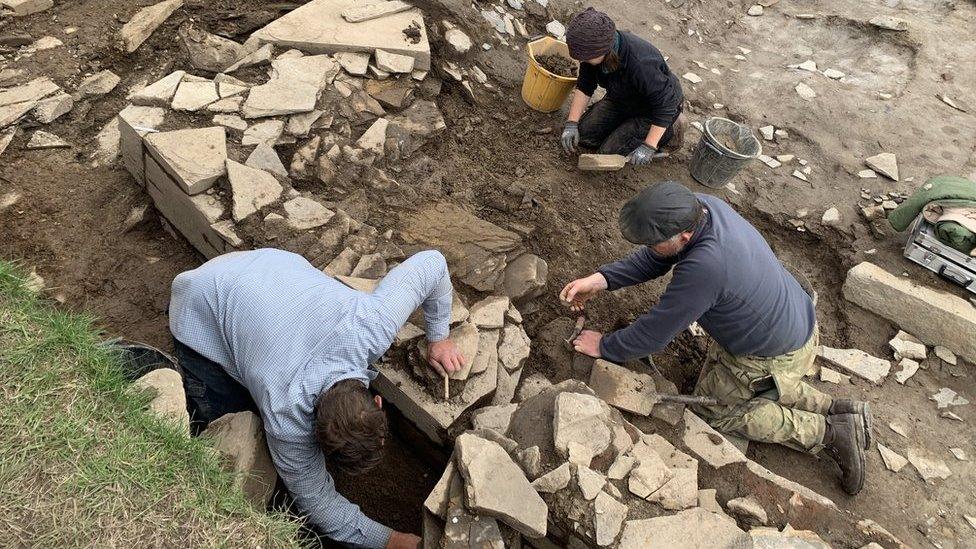
Excavations resumed after the pandemic
Whale bones and some of the UK's oldest steps are among new finds unveiled at the famous Ness of Brodgar Neolithic settlement in Orkney.
The Ness of Brodgar, next to the famous Ring of Brodgar, is one of the most important sites of its type in Europe.
University of the Highlands and Islands (UHI) archaeologists have finished seven weeks of excavation in the first season back after the pandemic.
They say what they have found this year has got the whole team excited.
The site has been under excavation since 2004, revealing a complex of Neolithic buildings.

Ness of Brodgar site director Nick Card said it was a centre of innovation
Site director Nick Card said: "We've expanded Trench J and revealed more of the northern wall - The Great Wall of Brodgar - and we can see stone steps built and actually integrated into it and these are some of the earliest steps in the UK.
"Again we see the Ness being a centre for innovation."
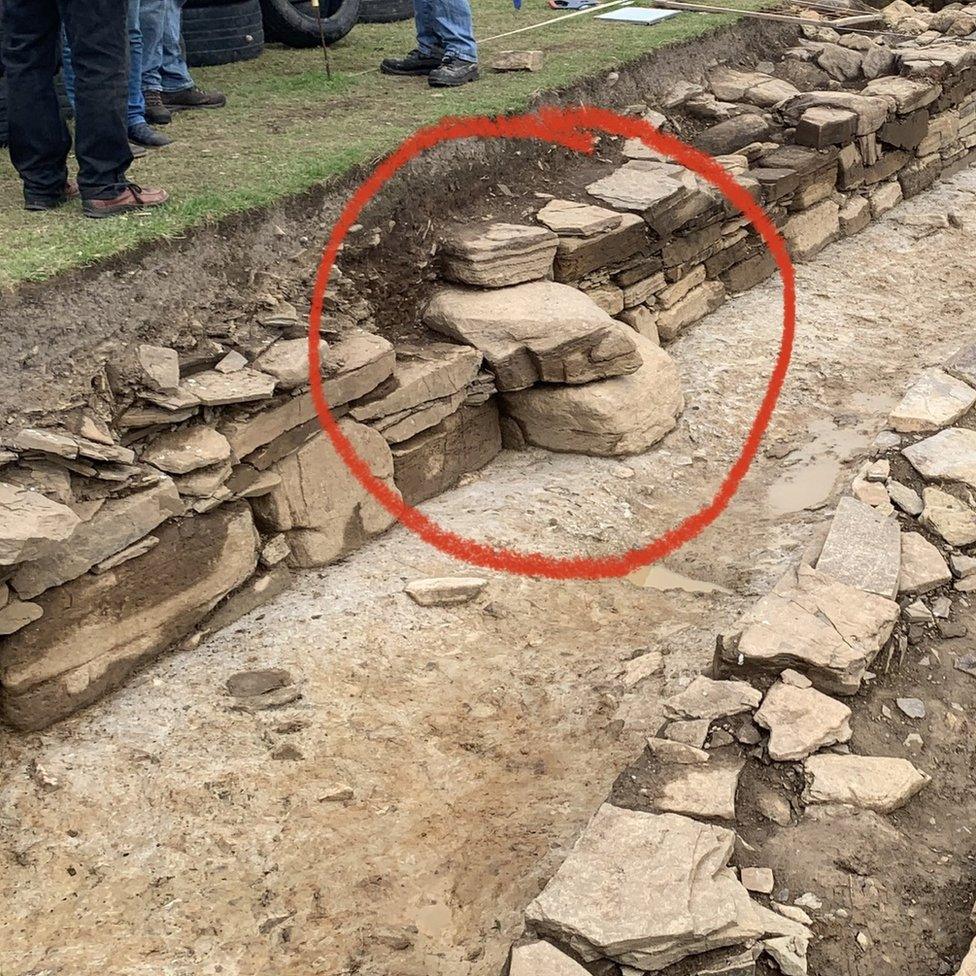
Stone steps have been found

Also in Trench J is Structure 5, the earliest building on site which dates back to 3,400 BC.
An expansion of the digging here revealed an unexpected find.
Project officer Anne Mitchell said: "There are these post-holes in the structure and we've found some quite interesting deposits in those.
"One by the side of the trench had a whale bone in it, a vertebrae sideways on, which we're very carefully going to conserve and perhaps even find out what type of whale it was."

Anne Mitchell said interesting finds had been made
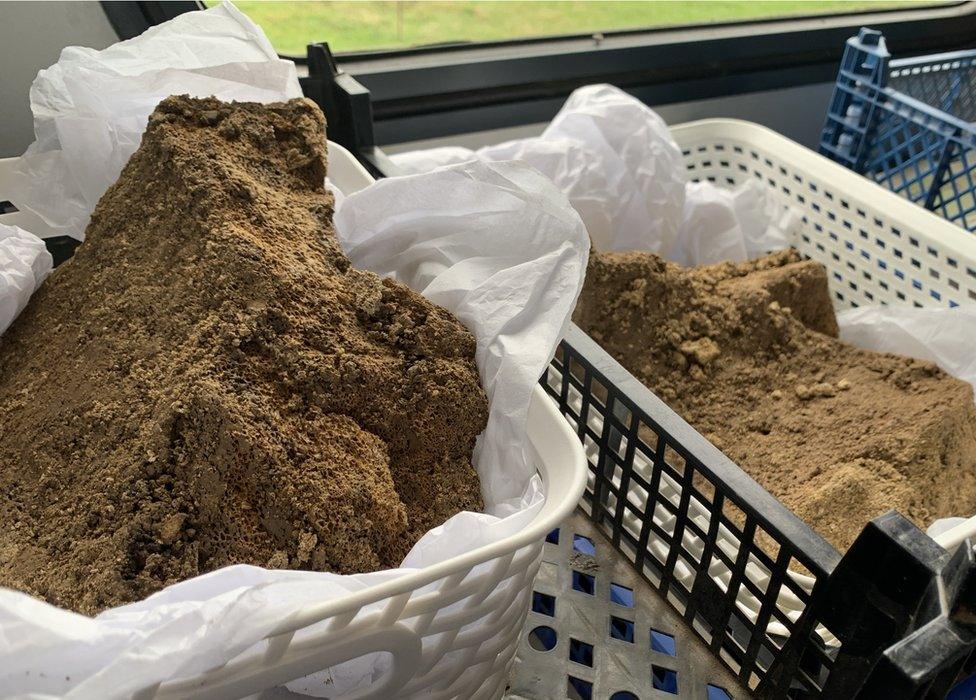
A whale bone was discovered
A number of ornate thumb pots, axe heads and even some stone spatulas which are unique to the Ness have all been found this year.
"But the best is yet to come," said Mr Card.
He was talking about Structure 27 which has been a major focus of the work this year.
A large amount of midden (historical waste) was covering the building at the start of the year.
This, added to a series of "robbing events" - where stones had been taken in the Neolithic period and repurposed - meant that much of Structure 27 had been obscured, until this year.
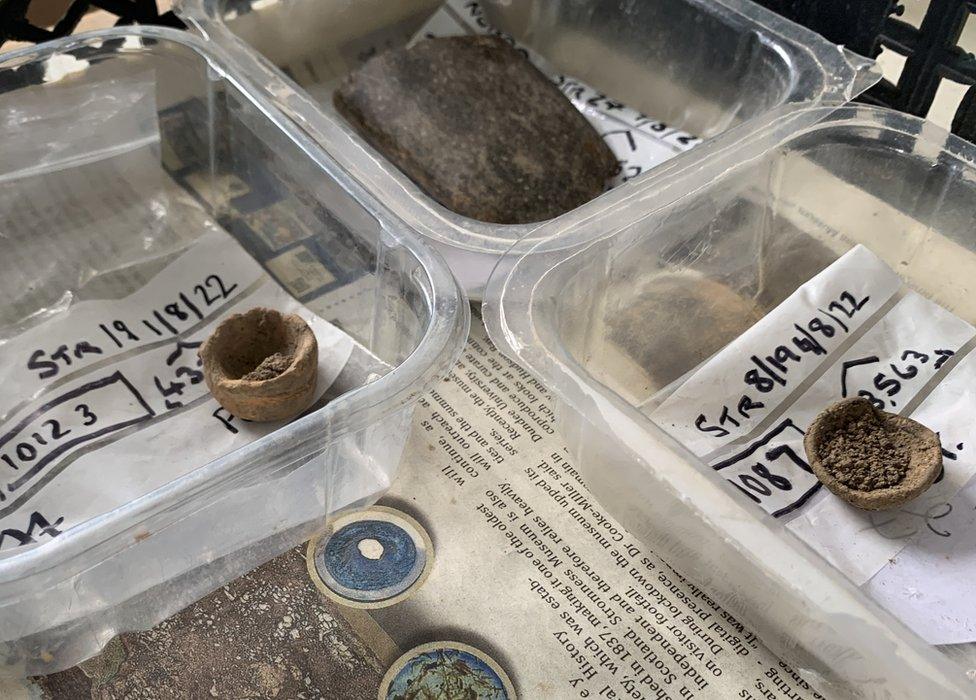
Ness of Brodgar artefacts
Mr Card said: "We had hoped that this side of the building would be better preserved and sure enough it is.
"You can see this walling which still survives and the courses are just perfection.
"We're blessed in Orkney with these kind of naturally-occurring Lego blocks where the stone splits when it's quarried both horizontally and vertically and the builders of Structure 27 here have made full use of those slabs."
Structure 27 is thought to date back to 3,000 BC but much of the building's history is still a mystery.
Anne Mitchell said: "We know it's very special because of this wonderful walling, but in actual fact what its use was remains elusive."
The archaeologists hope to discover more about this building in the near future.
For now, moveable finds will be taken away to be studied in laboratories over the winter and the site will be covered over, ready for the digging season to start again next year.
Related topics
- Published6 July 2022
